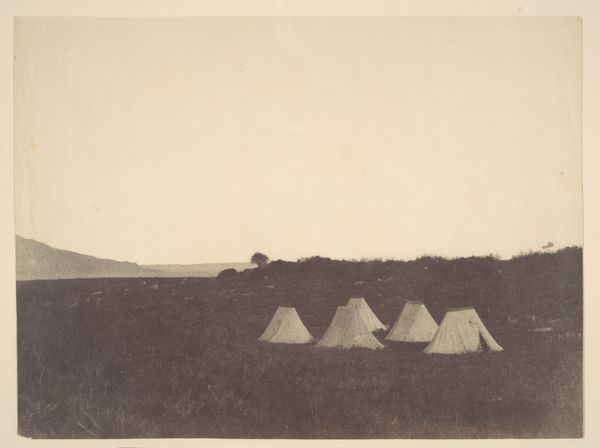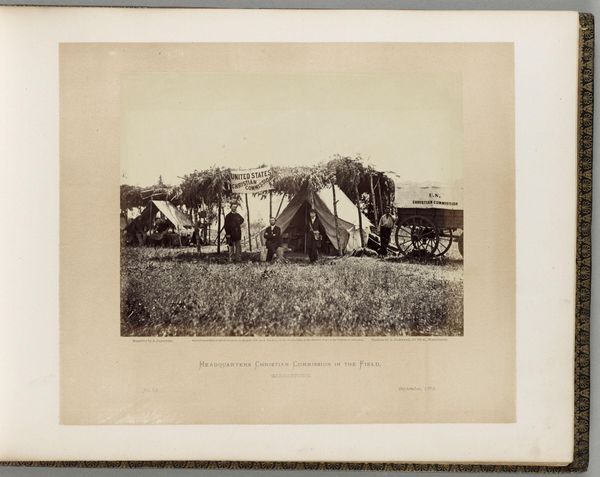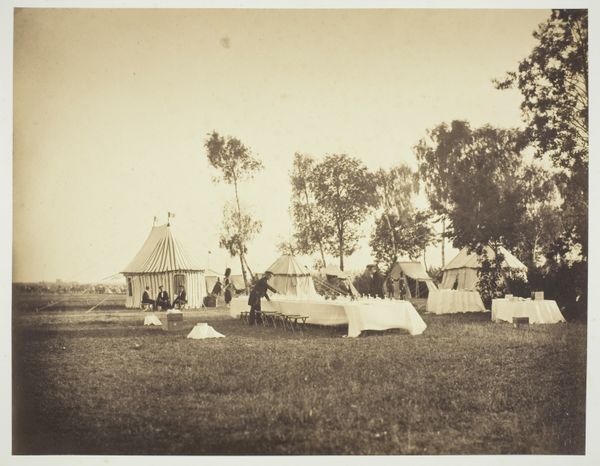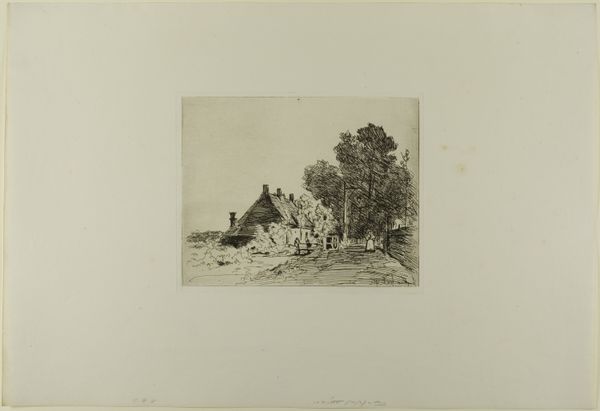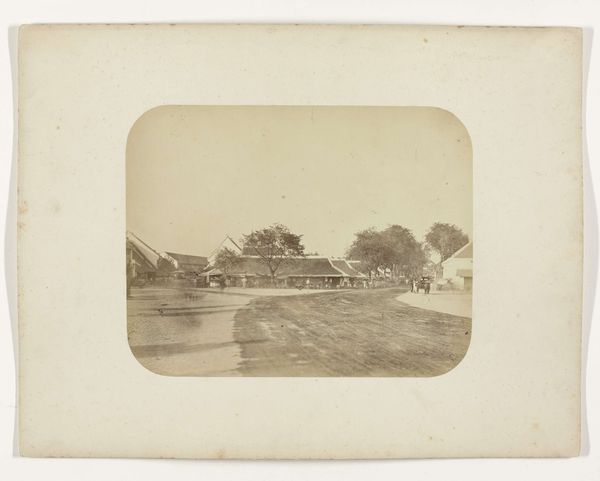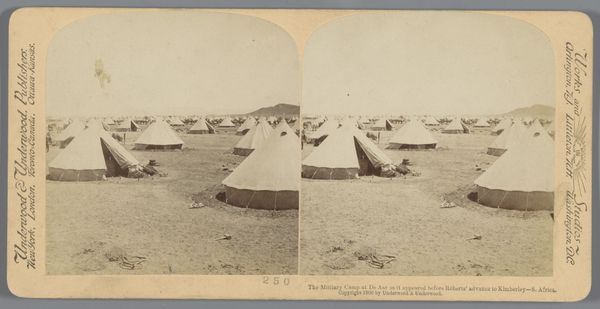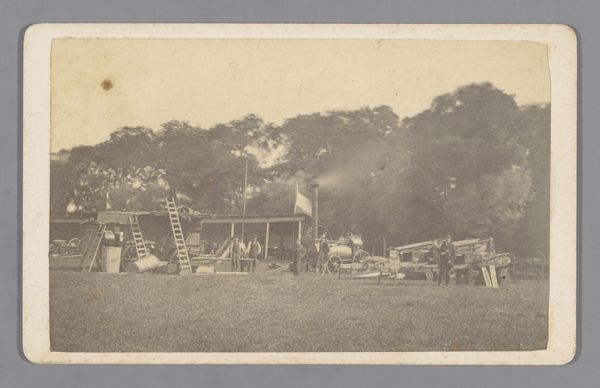
#
photo of handprinted image
#
aged paper
#
homemade paper
#
pale palette
#
muted colour palette
#
ink paper printed
#
light coloured
#
white palette
#
watercolour illustration
#
watercolor
Dimensions: height 100 mm, width 158 mm, height 210 mm, width 256 mm
Copyright: Rijks Museum: Open Domain
Curator: My first impression of this image is how subdued the entire scene looks; the limited colour palette adds to the feeling of stillness and quiet anticipation. Editor: Let's delve deeper. The Rijksmuseum holds this photograph, titled "Overstroming in Nieuwkuijk," taken by Albert Greiner between 1880 and 1881. It presents an important opportunity to examine the intersection of environmental disaster and social resilience in late 19th-century Netherlands. Curator: Immediately, my eye is drawn to the presence of the tents and the huddled figures; I'm compelled to consider how these motifs reflect broader human responses to displacement and hardship, maybe some feeling of community in disaster. Editor: The tents, sharply contrasting against the landscape, symbolize temporary shelter and survival but could be perceived as stark visual reminders of governmental indifference. Thinking of social contexts of the period, one wonders if the residents could feel powerless to face these environmental disasters without proper assistance from the local rulers? Curator: Visually, this resonates powerfully. The relatively light colour may carry the cultural connotations of hope or of the necessity to keep spirits up. What is most symbolic here? Editor: For me, the monochromatic palette carries emotional weight – a sort of cultural memory surrounding natural disasters and potential social isolation, that leaves the observer an uncomfortable impression. Curator: It’s fascinating how different historical lenses affect our view, how art becomes evidence. Thanks for helping unpack this photo's layers. Editor: And for offering perspectives on emotional resonance and the power of the human will to prevail!
Comments
No comments
Be the first to comment and join the conversation on the ultimate creative platform.

